Subscribe now and get the latest podcast releases delivered straight to your inbox.
The 2019 Internet Trends Report is here!
If you’re not familiar, this is an annual report by Bond Capital founder Mary Meeker that is highly anticipated by many in the digital industry.
The report documents notable usage trends over the past year and provides a good overview of where we currently are and where we could be going.
Meeker’s research covers many topics — including advertising spending, device use, gaming trends, and more.
The entire report is a hefty 333 pages, so I pulled out the most important findings for digital marketers.
You can read the full report (and the archive from previous years) here.
1 E-Commerce Sales Trending Upwards
Last year, e-commerce accounted for 14% of all retail sales, this year, that number has jumped to 15%. While 1% may seem insignificant, such growth proves that more and more people are seeing the value of researching, locating, and purchasing products online as opposed to in stores.
Lesson for Marketers: Whether it be for convenience or simply a wider selection, people are actively looking to buy products online.
So, if your brand is local or not, consider making your full product offerings available for e-commerce sales. Additionally, it’s important to know that as e-commerce continues to grow, the digital marketplace will only become more competitive — so make sure you’re getting in ahead of the curve.
2. Internet Ad Spend is Trending Upwards, Specifically Mobile
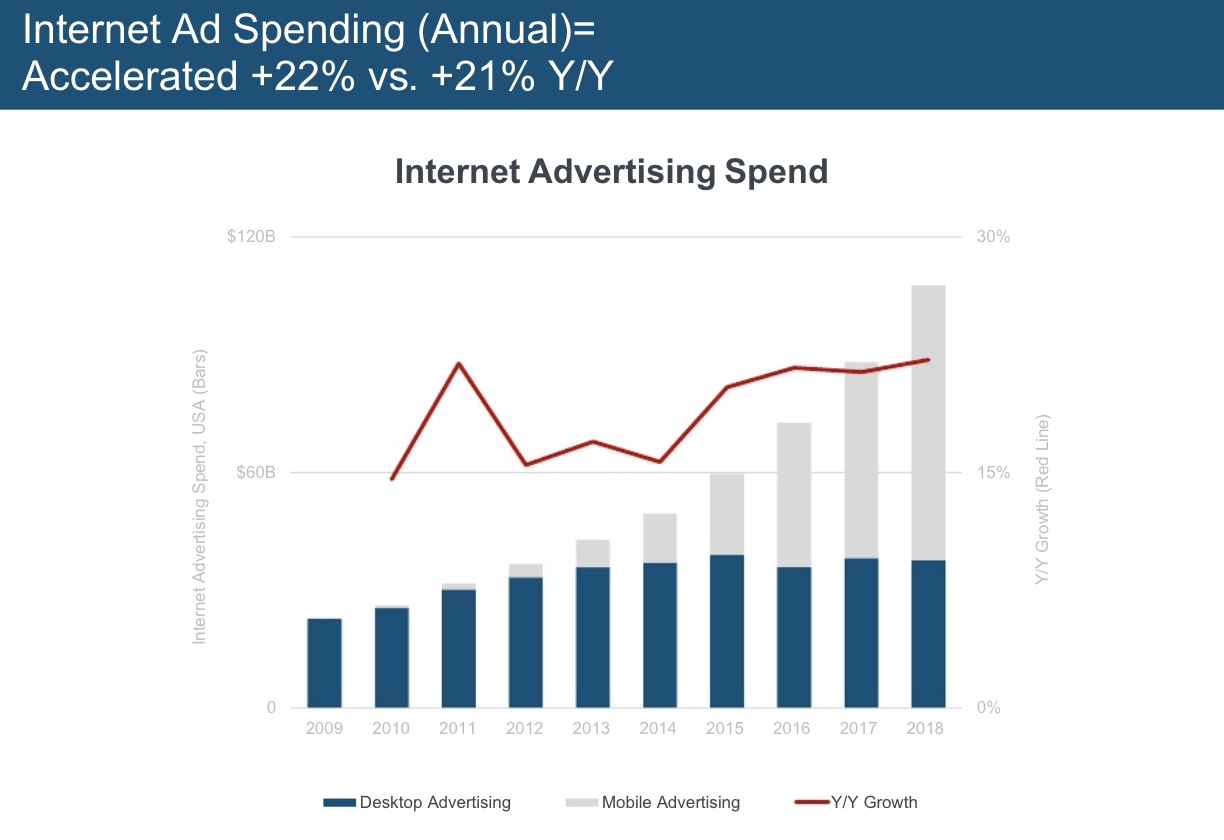
Internet ad spend continues to accelerate as more and more companies see the value in its enhanced targeting and analytic capabilities.
This year, we saw overall internet ad spend grow 22%, with a majority of that jump being attributed to mobile.
This trend is explained by Meeker’s research into consumer usage. We’ve seen an uptick in mobile internet use for a few years now.
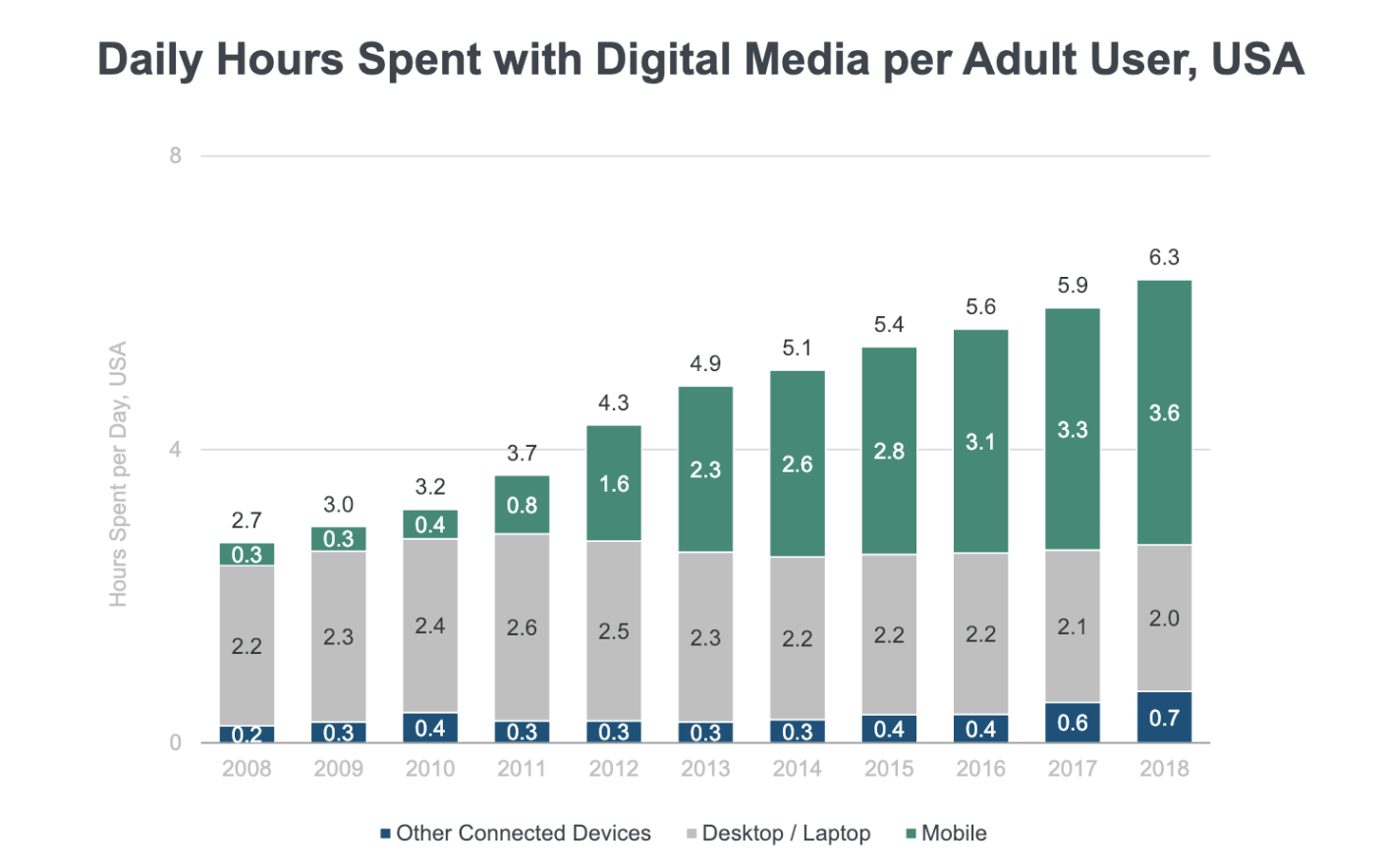
This isn’t surprising; after all, significant improvements to mobile internet accessibility over the past few years has made it the obvious choice for browsing social networks, looking up a quick fact, or even making purchases — all from increasingly ubiquitous devices.
Meeker’s research has also shown that 2019 has been a turning point for mobile phone use. This year, daily time spent on mobile surpassed daily time spent on television, making mobile the leader in daily use by consumers.
-1-1.png)
For this reason, it only makes sense that we’re seeing brands invest more heavily in mobile advertising, and we can expect this trend to continue moving forward.
Lesson for Marketers: Clearly, mobile is taking over. Screens are bigger, phones are faster, and your mobile device is nearly always on you.
For this reason, it’s more important than ever to make sure your site is well-optimized for the mobile user. To see how your website is performing on mobile, check out your mobile-friendliness test on Google Search Console to see if your website has any notable issues for mobile users.
Moreover, if you want to get the most out of your ad spend, consider prioritizing mobile impressions and clicks.
3. Customer Acquisition Costs Are Rising
According to Meeker’s research, the average Customer Acquisition Cost (CAC), or the cost it takes to gain a new customer, is rising.
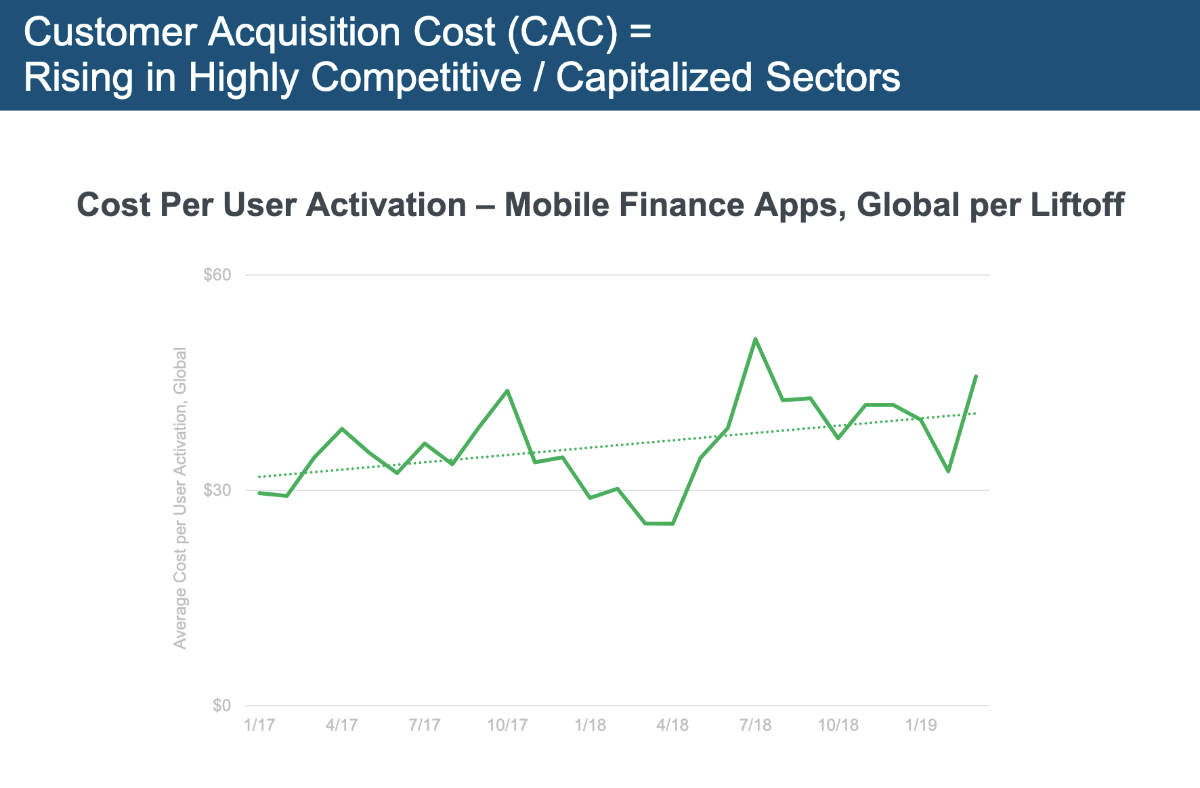
In hyper-competitive fields, this trend directly correlates with the uptick in ad spend. After all, if it costs more for a potential prospect to see your ad, your overall costs to acquire a customer will rise as well.
This can be an issue because the acquisition cost could soon surpass the lifetime value (LTV) of the customer. So, if it costs more money to gain a customer than they’ll spend once onboarded, that puts your company in the negative.
For this reason, Meeker suggests other ways to pull in new paying customers outside of paid digital advertising.
She recommends two different tactics as alternatives:
Freemium Product
Things like free trials or a freemium product can pull potential customers into your product and offerings, and keep them on the “hook” long enough for them to convert.
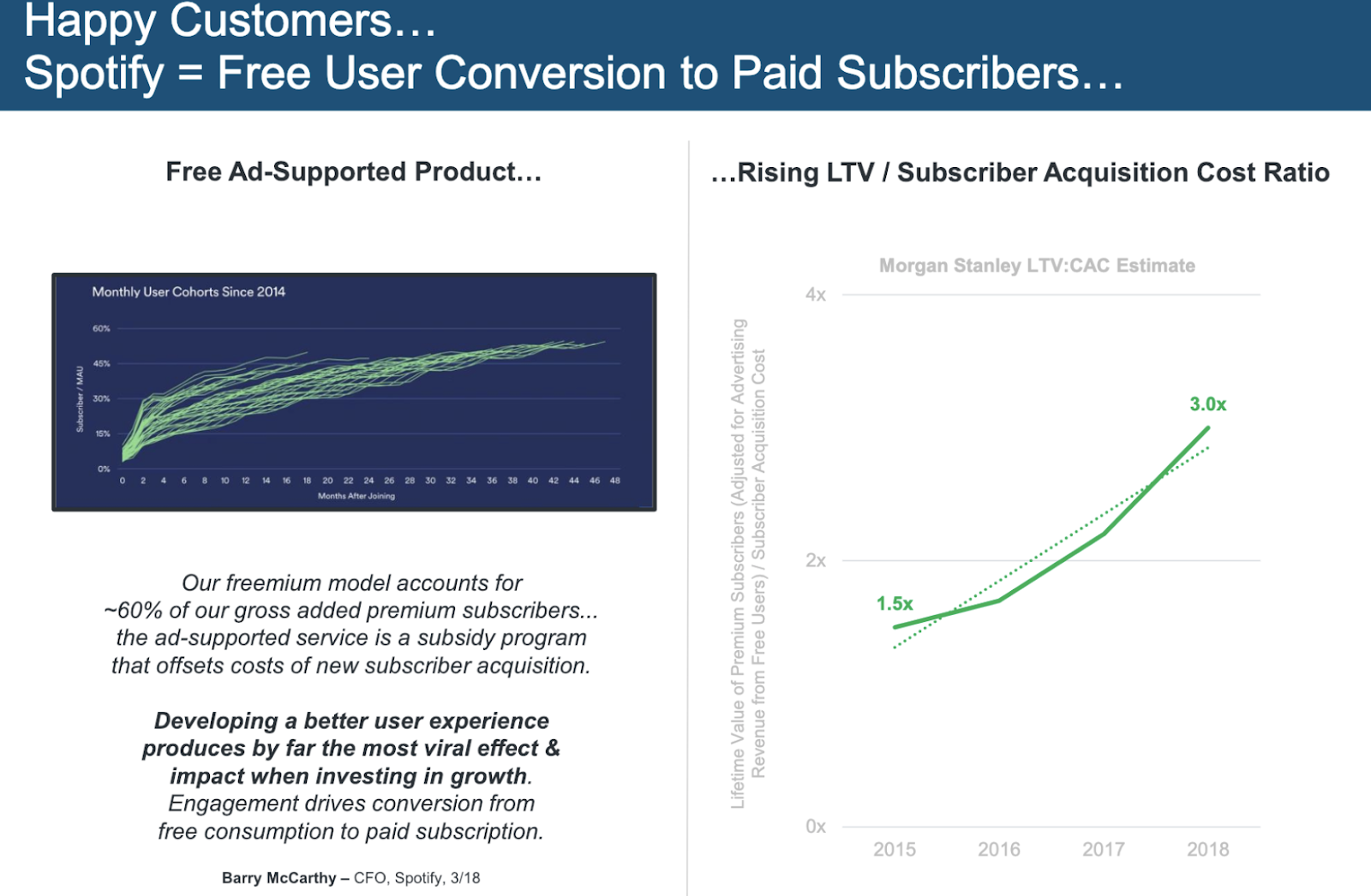 One of the examples Meeker uses is Spotify.
One of the examples Meeker uses is Spotify.
Spotify offers an ad-supported free product, with the option to access new features and remove ads for a free trial. As noted by the chart below, their efforts have proved to be successful (also, from personal experience, if you try the free, ad-supported version for a few days, the upgrade is a no-brainer)
Customer Recommendations
Despite how much marketing has evolved, one tactic will always stay on top: Word of Mouth.
Happy customers are always your best marketing asset, and brands should use them accordingly to showcase their positive experiences.
Of course, the key to getting happy customers is listening to their feedback and actively implementing it.
To support this tactic, Meeker cites popular clothing subscription service StitchFix, which utilizes personalized recommendations from stylists and customers to create customized boxes for each client.
The service utilizes customer feedback to make style recommendations stronger and stronger overtime. This approach has proven successful, based on StitchFix’s active client growth year over year.
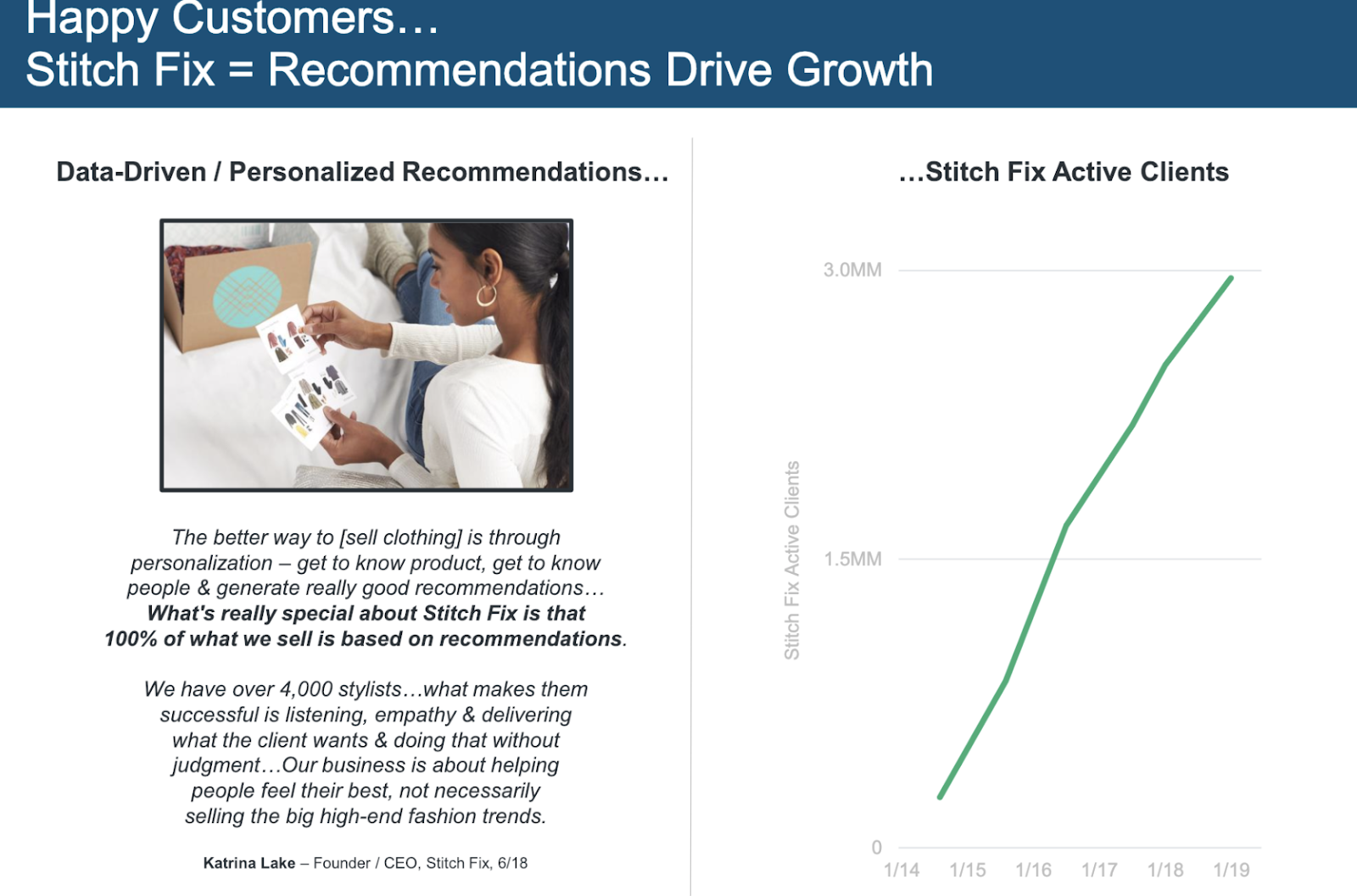
Lesson for Marketers: Great ad creative and imagery are great, but it can only get you as far as your budget.
Find unique ways to showcase your offerings to customers once they’ve noticed you. For products with recurring payments, consumers will understandably have a barrier to entry. However, you can mitigate that without needing to run multiple “re-engagement” campaigns by focusing on improving your core product and getting them to want more.
4. Image Use is Rising
We always say “Content is King,” but that doesn’t apply to just words.
Meeker’s research documents the evolution of how humans communicate via images. Dating back to cave drawings, humans have used images to tell stories and illustrate concepts for eons.
Now, in the internet age, we’re seeing images have a stronger pull in how we communicate online.
In addition to the sustained rise of photo-centric platforms like Instagram (as pictured in the graph above), we’ve also seen a significant increase in image use on text-centric platforms like Twitter.
Meeker’s research shows that 50% of tweets now contain images or video content, suggesting that the old saying “a picture is worth a thousand words” still rings true.
But if humans have always used images to communicate, what explains the recent increase?
Well, Meeker attributes this advancement to growth in four key areas
- Smartphone cameras
- Smartphone photo storage
- Stronger cellular data
- Stronger wifi connection/reach
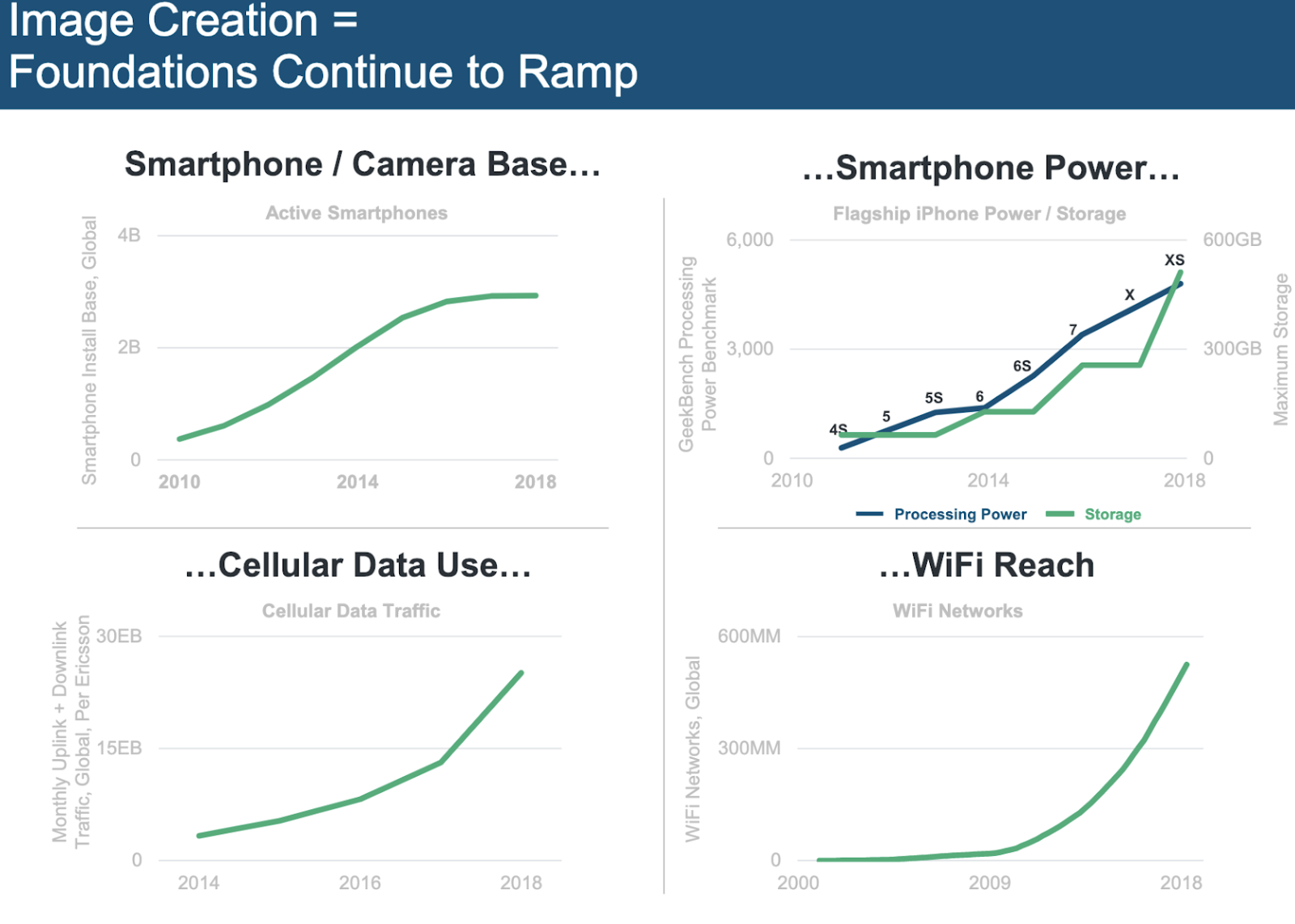
So, it’s not that this behavior is rising, it's simply that we now have more access to utilize images online than we have in previous years.
Lesson For Marketers: Follow the age-old saying, “show, don’t tell!”
In other words, don’t say that your software has a user-friendly interface, show an example. Utilize images in social posts, on your website, and in other content to better illustrate your points.
However, don’t forget to add alt text to provide Google (and screen readers for the visually-impaired users) the needed contextual clues to make sense of your site.
5. With More Data Out There Than Ever Before, Use It Effectively
Modern marketing systems have a virtually endless flow of data coming in on a daily basis.
Meeker illustrates this point with the image below.
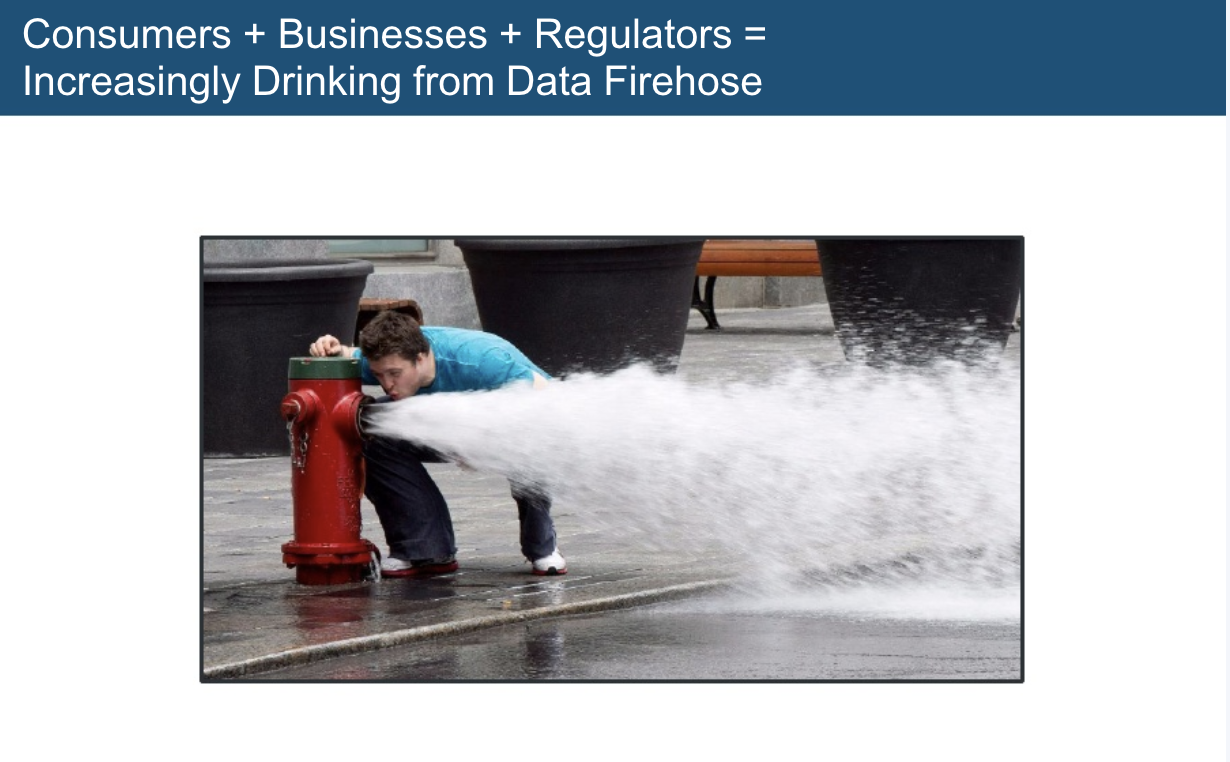
Drinking from a data firehose can cause what is commonly referred to as analysis paralysis, or when you have so much data you don’t even know how to begin using it.
To combat this, Meeker offered a few solutions for companies to use data effectively.
The report found that companies that utilize data with the core intention of improving customer experiences yield the best results.
To do this, Meeker suggests creating “data plumbing tools.”
Data plumbing tools are essentially strategies that guide your data collection and utilization efforts in order to bring clarity and purpose to all the data in your system.
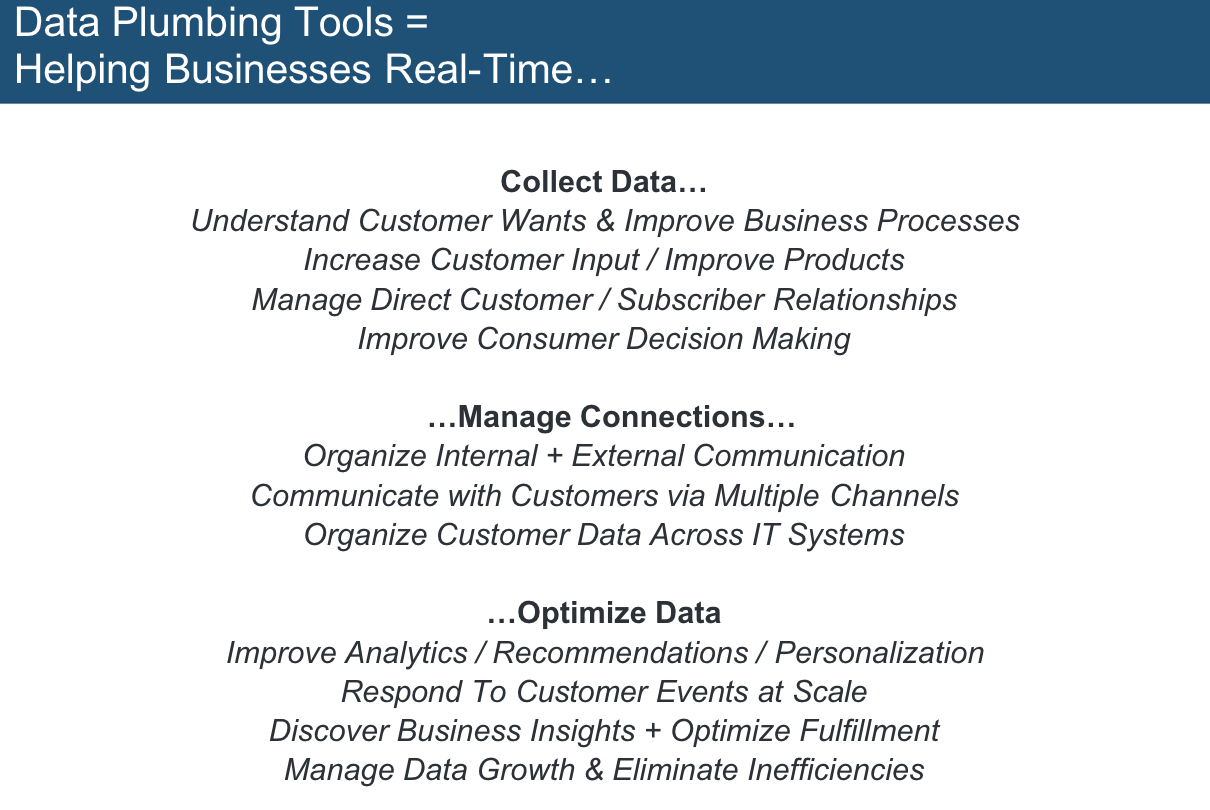
In the report, Meeker found that these data plumbing tools can help businesses solve key issues and make enhancements to their product or service. She lists some examples in the graphic below. In other words, brands that have a purpose behind the collection and use of data are able to better categorize and use it to produce real results for their business.
For example, the report showcases two examples from Salesforce and Adidas, which both collected customer data with the intention of getting input that would help them improve the quality of their products.
The results speak for themselves:
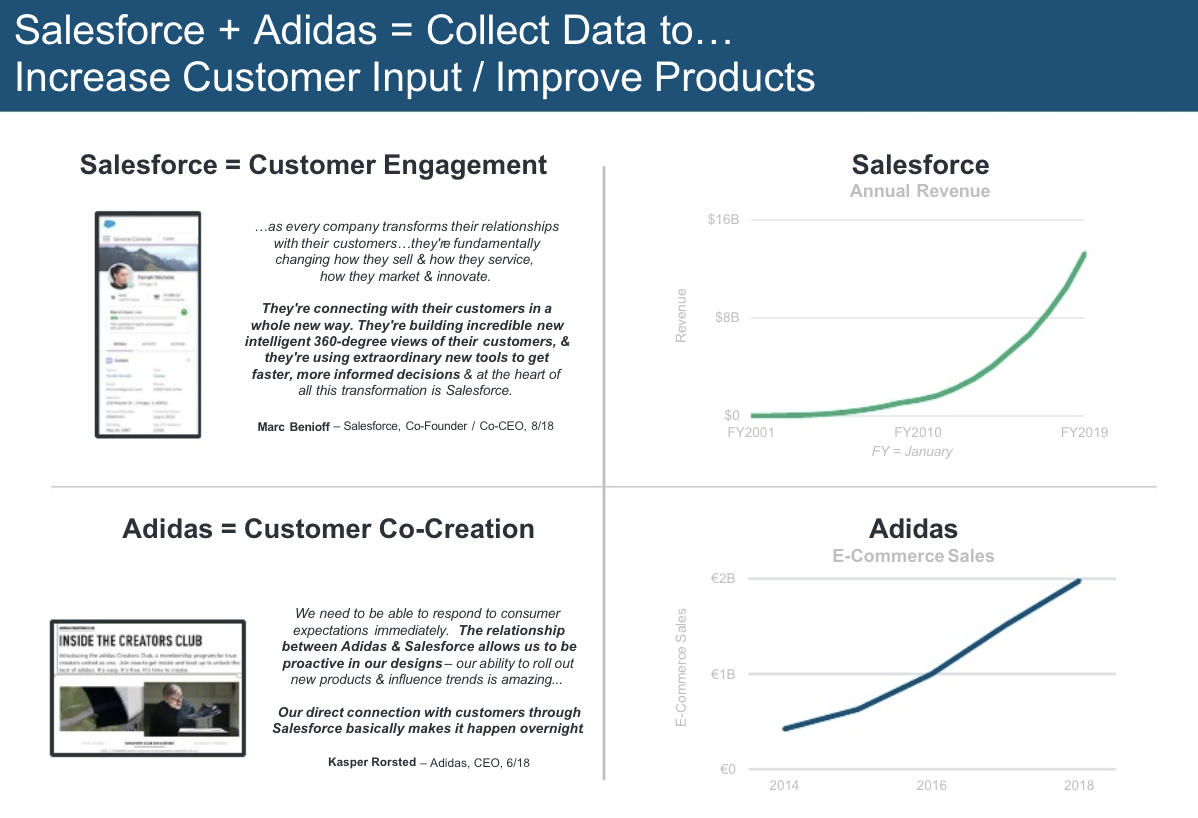
This approach works for a few reasons. Your current customers feel heard and valued, and the feedback they provide also helps attract new customers who will ultimately benefit from the improved product.
Because these teams had a clear goal in mind for their data collection initiative, it allowed both of these companies to use the feedback in an effective way to improve their products.
The report also cites specific case studies for each of the above examples, which you can access in full on pages 134 - 144 of the full report.
Lesson for Marketers: Collect and use data with purpose. We have access to so much analytic information on our customers and prospects, but unless we put forth the effort to use it wisely, all it will ever do it sit in your database.
Moreover, if you’re not collecting and utilizing this data strategically, it can be misused to draw incorrect conclusions or miss key trends that could have been used to improve your products or customer happiness.
Take action based on Meeker’s report, and use it to boost both your customer experience and your bottom line.
Free: Assessment

